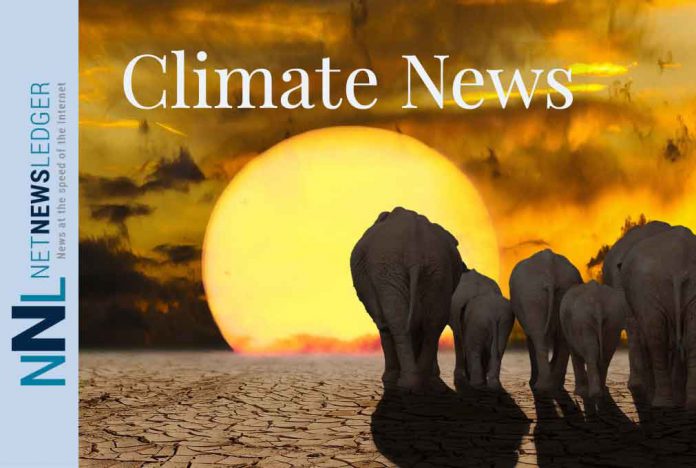Many of same workers harmed by COVID-19; more robust health protections are needed for workers facing dual crises
WASHINGTON – A new report warns that the health and safety of workers across the country, both indoors and outdoors, is increasingly at risk from excessive heat, increasing air and water pollution, spreading infectious diseases, extreme weather, challenges to their mental health and other impacts from climate change.
The report is among the first to warn that climate change poses a serious health threat to people working at indoor jobs, such as airline flight attendants, warehouse workers, home health care workers, and teachers.
Furthermore, the COVID-19 pandemic is adding another layer of danger to essential workers because many also are threatened by climate change.
The report, “On the Front Lines: Climate Change Threatens the Health of America’s Workers” was released today by NRDC (Natural Resources Defense Council), the BlueGreen Alliance, and several labor organizations. It includes 14 first-hand stories from outdoor and indoor workers impacted by climate change.
“The climate crisis isn’t just endangering the health and safety of outdoor workers, it’s also a serious threat to indoor workers. Janitors, bus drivers, public health workers, and others deemed essential in the pandemic, are on the frontlines of harm,” said Juanita Constible, principal author of the report and a climate health expert at NRDC. “This dual public health crisis demands that our country ramp up more robust health protections for workers now. The good news is that protecting worker health from the impacts of the climate crisis is fully within our grasp—but it will get harder the longer we wait to act.”
Among workers potentially at risk from climate change and COVID-19 are wildland firefighters already battling an active fire season in the West; public health nurses currently conducting outdoor COVID-19 tests; migrant workers engaged in flood and hurricane recovery; and teachers who may return to in-person education this fall in schools lacking air conditioning.
In addition, Black people, Latinx, and other people of color who are experiencing the highest numbers of deaths from COVID-19 are more likely to work in essential industries and jobs than white people.
The report notes that in addition to putting the health and safety of workers across the country at risk, climate change is causing economic devastation to communities. Disasters can slash take-home pay by shuttering businesses, disrupting commuting routes, and reducing the number of hours and days during which people can safely work.
To address these problems, the report calls for federal legislation and action by federal agencies to put a high priority on improving health protections for workers. Sadly, rapid changes in the climate and recent rollbacks in occupational safeguards are leaving state and federal agencies unable to hold employers accountable for dangerous and unhealthy workplaces, the report states.
Among key recommendations, the report calls for:
- Strengthening the role of unions and other worker organizations to ensure workers are full partners in the effort to protect their health and safety from climate change.
- Building a better system to track, analyze, and quickly act on existing and emerging health and safety threats to workers.
- Amending the Occupational Safety and Health Act to ensure state and local public sector workers are protected in all 50 states, the District of Columbia, and all-island territories.
- Ensuring the Occupational Safety and Health Administration (OSHA) has enough budget and staffing for timely and effective enforcement.
- Creating policies and programs to help professionalize disaster response and recovery across multiple sectors, including through job creation and training programs and climate information support to labor unions and employers.
- The Department of Labor developing a plan to address the cumulative health and safety threats of climate change to workers.
- OSHA establishing an enforceable federal heat health standard protecting all workers.
The report’s first-hand accounts include stories from a fiber-optic technician and a laundry worker in Florida; a nurse and a janitor in Pennsylvania; a home health care worker, a hospital cook, a splicing technician, and a telephone line technician in California; a garment sewer in North Carolina; a union staffer in Puerto Rico; a health care worker in Texas; a service representative in Georgia; and a school bus owner/operator in Louisiana.
The following are comments from those helping launch the report or the impacted workers.
“During my lifetime I’ve seen the heat get way out of normal range, along with the severity of storms and flooding said Orlando Green, a school bus owner/operator and member of St. Tammany Federation of Teachers and School Employees, AFT and lives in Slidell, Louisiana, and is included in the report. “The increasing heat in Louisiana has made my job a lot harder. During the humid summers, with all 40 kids crowded inside, the heat index can reach around 105 degrees on the bus. One child has diabetes and extreme heat can be really dangerous for him. These conditions aren’t conducive to the children’s health, good behavior, or learning. I hope that elected officials at every level start supporting solutions to this emergency, so we can get a handle on the increasingly dangerous conditions we’re experiencing.”
“We need our hospitals to have proper staffing and emergency protocols in place to deal with climate-related disasters, as well as more funding invested in infectious disease research and treatment,” said Michele Boyle a registered nurse featured in the report and member of Service Employees International Union Healthcare, Pittsburgh, PA. “We also must vastly expand the renewable energy economy to clean up our air, and make sure those new jobs are good, middle-class jobs where workers have a union voice.”
“In recent years, we’ve been having wildfires one right after the other, which can stretch for hundreds of miles. During wildfire season, I work 16 hours a day, seven days a week, for up to four months straight. My coworkers and I are dealing with heat exhaustion and breathing in soot, ash, and toxic chemicals,” said Shawn Heape, an AT&T telephone line technician and a member of CWA Local 9400, who is in the report. “Companies like AT&T and our elected officials need to start taking steps to protect those of us who are working in and around wildfires to keep communications services going.”
“AFT’s members—our bus drivers, nurses, sanitation workers, and researchers to name a few—are the frontline workers who see and live the impacts of the climate crisis on a daily basis and see how it impacts directly an entire generation of students, as well as our communities overall, said Randi Weingarten, president of the American Federation of Teachers. “I hear stories just like Orlando’s, of people who have been subjected to unbearable working conditions due to the disastrous effects of climate change, as well as tales of students going to school on flood plains, or patients being treated for debilitating diseases due to living in waste hotspots, all because the right-wing corporate lobby wants to deny climate science and refuses to invest in climate preparedness. Today, unfortunately, tackling the climate crisis has largely taken place along party lines. But safeguarding the environment is not a partisan matter—protecting the lives of workers, their families, and their communities shouldn’t have two sides.”
“To build an equitable society, we must acknowledge the crises we face today are interconnected. So are their solutions,” said BlueGreen Alliance Executive Director Jason Walsh. “We must stand together and fight for the solutions that will bring about racial, economic, and environmental justice for every worker and person in our nation.”
“The effects that climate change is having on workers are undeniable,” said CWA President Chris Shelton. “We can’t bury our heads in the sand while workers are putting their lives on the line as the situation worsens. As big oil and gas companies are reaping mega-profits and destroying our planet, CWA members and other workers are increasingly being exposed to dangerously high temperatures and other serious workplace hazards. We must pursue aggressive legislative solutions to give OSHA the mandate and resources to identify these workplace hazards, respond to them rapidly and adequately, and implement and enforce stronger safety protections — but those steps alone are not enough. We must also expand collective bargaining rights to ensure that more workers have a voice on the job and a say over working conditions, including their health and safety.”







